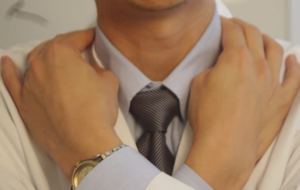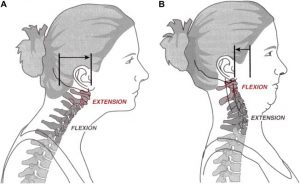by Troy Vander Molen, PT, DPT
As a physical therapist, it’s common for me to work with a person experiencing neck pain. In fact, studies have shown that in one year, between 10-20% of the population will experience neck problems. Research also tells us that only 7% of people with musculoskeletal issues see a physical therapist each year. So, I can easily deduce that there are a lot of people reading this article that have experienced neck pain but have never sought the counsel of a physical therapist for their neck pain management needs.
 I know it is a little daunting making the decision to see a physical therapist, so let me share some key principles that will help you understand your neck and how to care for it.
I know it is a little daunting making the decision to see a physical therapist, so let me share some key principles that will help you understand your neck and how to care for it.
The neck – formally known as the cervical spine – is made up of seven vertebral segments. The alignment and orientation of the joints that connect each segment (known as facet joints) allows for a lot of rotation movement, which is very important if you are merging into traffic, for example. Overall though, the neck is quite mobile in all three dimensions of movement – rotation, side bending, and flexion/extension.
At times, our necks experience a localized area of pain and soreness. Most of us know what it feels like to have a “kink” in our neck – localized pain on one side that makes turning the head difficult. Why does this occur? Most often it is because one of the joints between cervical segments that guide and control movement has become irritated.
Relieving Neck Pain
If this occurs to you, here are three great ideas to get rid of that pain:
- Push Through the Pressure

With this type of issue, there are often associated muscle tightness issues, sometimes even trigger points. Use your thumb or fingers of the hand opposite the side of pain and push directly in the middle of the tight muscle (Figure 1). Hold it for about 45 seconds, and follow up with a stretch in the opposite direction. Repeat this 2-3 times to reduce muscle tension and pain.
- Monitor Your Posture
Kinks in the neck are usually an indication that your posture is suboptimal. A slouched posture results in upper back flexion, and the neck compensates by falling forward and extending at the upper cervical segments (Figure 2A). Repeat correct posture by sitting tall and performing a chin tuck (Figure 2B), which reverses the faulty posture.

Figure 2. Chin tuck
- Use the Blessing of Movement
An often forgotten strategy is using movement to reduce pain and muscle tightness. It is a natural reaction to splint the neck when a kink occurs. Unfortunately, a lack of movement reduces nutrition to the neck joints, and the problem is typically prolonged. Instead, you should move the neck, but be sure to emphasize movement away from the sharp pain. For example, if it hurts to rotate to the right, you should repeatedly rotate the neck to the left to help it loosen up. You can use the same strategy for side bending and flexion/extension. Motion helps drive nutrition to the joint, which helps resolve the problem.
The Root of the Problem
If you’ve read any of my articles in the past, you know that I always talk about the neighbors to the area of pain. The neck is no different. Treating your neck pain is different than treating the neck problem. So, if you get some benefit from the aforementioned exercises, it’s because you’ve used strategies to reduce the pain, but you haven’t necessarily eliminated the problem.
If you have explored pain relief methods such as medications, injections, taping procedures, or surgery focused on the area of pain, you will likely feel better… at least for a while. However, it’s likely that the pain will return because you haven’t found and fixed the root problem.
It’s no secret that different areas of the body work together to help us function at our best. When we experience pain in one area, it may be related to a problem in an associated area. For example, last month, I told you that a majority of the people I’ve helped with shoulder issues had limited thoracic spine and hip mobility. (Check out that article here.) Similarly, nearly all of the people who have visited our office over the years for neck pain management have had issues related to the thoracic spine.
If you are experiencing recurrent neck pain, I’d encourage you to act now. With locations in Ames, Centerville, Colfax, Des Moines, Newton, Oskaloosa, Pella, and Waukee, Kinetic Edge Physical Therapy is proud to help clients throughout the state of Iowa achieve lasting neck pain relief through our dedicated physical therapy services.
Send us a message or call us today at 866-588-0230 to get a complimentary, brief (15-minute), no strings attached assessment with one of our physical therapists. We look forward to helping you develop a plan that goes beyond neck pain management to treat the problem at the source.



